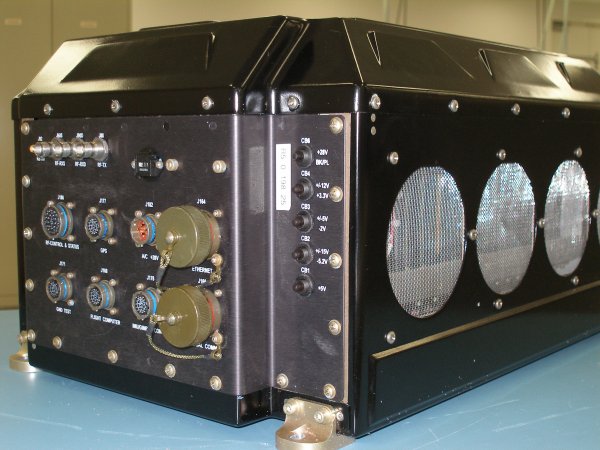 |
| Lynx Block 20A Two Axis Multichannel Gimbaled Radar Reflector Antenna |
 |
| Lynx Block 20A Radar Electronics Cabinet |
General Atomics - Aeronautical Systems Inc., Poway, California, has been awarded a $23,075,907 firm-fixed-price delivery order (0087) under basic ordering agreement FA8620-10-G-3038 for MQ-9 Block 20A Lynx SAR retrofit kits. Contractor will provide 72 MQ-9 Block 20A Lynx SARretrofit kits for the MQ-9 aircraft. Work will be performed at Poway, California, and is expected to be complete by May 21, 2017. Fiscal 2014 aircraft procurement funds in the amount of $23,075,907 are being obligated at the time of award. Air Force Life Cycle Management Center, Wright-Patterson Air Force Base, Ohio, is the contracting activity.
Background/Related
 |
| Looking up into MQ-9 Lower Bay with Radome removed |
The Lynx Multi-mode Radar, upgraded to the two-channel Lynx Block 20A and in production, is capable of high-resolution video dismount detection and a 30-degree-per-second scan rate with algorithms optimized for detecting small vessels, including Self-Propelled Semi-Submersible (SPSS) vessels. The Lynx MWAS and Dismount Moving Target Indicator (DMTI) capabilities, along with a three-fold increase in the Ground Moving Target Indicator (GMTI) area coverage rate and a new SAR-aided alignment mode, have been incorporated into Lynx radars and are being deployed by U.S. customers.
GA-ASI Adds New Features to Predator/Reaper UAS | Defense: Aviation International News
General Atomics Aeronautical Systems (GA-ASI) announced new features on the sensors available for the Predator/Reaper series. The company’s Lynx Block 20A multimode radar now has a “VideoSAR” software system and the ability to auto cross-cue to an EO/IR sensor.
VideoSAR provides imagery in high-definition 1080p format, “allowing users to see vehicles at rest, moving fast and everything in between,” according to Linden Blue, president of GA-ASI’s reconnaissance systems group. The new mode also enables GMTI (ground moving target indication) with low minimum detectable velocity and precise SAR geolocation accuracy, the company claims. The prototype system was installed on a Beechcraft King Air 200 and flown in late March. It is now being “ruggedized” for carriage on the company’s UAVs, including the jet-powered Predator-C.
The cross-cueing capability was demonstrated during a recent U.S. Navy exercise. The King Air 200 acted as a Predator B (Reaper) surrogate aircraft. It carried the Lynx radar to detect ground-based moving targets, and GA-ASI’s Claw payload software system automatically cross-cued them to a Flir Systems Star Safire 380HD EO/IR imaging system. According to GA-ASI, this next-generation data-dissemination capability allowed naval commanders to review data rapidly, modify follow-on mission flight planning and demonstrate ad-hoc mission retasking of the aircraft directly by commanders based in the Tactical Operations Center (TOC). Sensor imagery was also streamed to other U.S. government entities in real time.
Next-gen radars: Seeing through the clutter - Military Embedded Systems
“Radar capability demands are trending toward dismount detection technology to detect people moving on the ground,” says John Fanelle, Program Director, Radar Systems, Reconnaissance Systems Group at General Atomics Aeronautical Systems Inc. (GA-ASI) in San Diego. “We have incorporated this capability into our Lynx Block 20A Multi-mode Radar and also added a maritime capability to cross-cue the Electro-Optic/Infrared (EO/IR) ball on the Predator B/MQ-9 Reaper Remotely Piloted Aircraft (RPA) fleet to detect shorter-range maritime targets. A maritime mode for the radar is currently being developed to detect specific small items in the water. For the maritime mode we can leverage different algorithms that are available now. It’s just a matter of getting them to work in real time.”

No comments:
Post a Comment